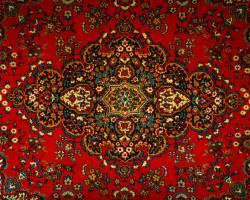
How Textiles Quietly Transform a Room
Design isn’t always about what you see first. Often, it’s what you feel—the texture of a throw, the weight of a curtain, the softness underfoot. In a space that’s already furnished, textiles offer the most immediate and flexible way to create visual cohesion, regulate light and sound, and set the tone of a room. These are six subtle but transformative textile choices that do more than decorate—they add a sense of depth, quiet, and care.
1. Floor-Length Curtains (In the Right Fabric)
Curtains are architectural as much as they are decorative. A room without them often feels unfinished or hollow. But fabric choice is key: linen softens the light with a relaxed, organic quality; velvet absorbs sound and creates a sense of intimacy; sheers layer in softness without blocking light.
Mount them high above the window frame and let them pool slightly at the floor. Even a modest room begins to feel more expansive—and more considered.
2. Layered Rugs (Not Just a Single Statement)
A good rug anchors a room, but a layered rug softens it. Placing a natural jute or sisal base with a smaller wool, kilim, or patterned rug on top adds both texture and warmth. It also lets you shift color and style over time without replacing the larger piece.
Layering also helps divide open-plan spaces or define zones in a studio or small flat. Texture here isn’t just visual—it’s functional.
3. Textiles on the Wall
Fabric doesn’t have to stay on the sofa or floor. A wall-mounted textile—think handwoven panel, soft tapestry, or even a framed piece of vintage fabric—adds visual softness and absorbs sound in rooms that echo.
Choose textiles with subtle texture or a muted palette to avoid overwhelming the space. In bedrooms and reading nooks, they create a sense of quiet enclosure.
4. Weighty, Oversized Throws
Many throws are too small, too thin, or too decorative to be useful. Instead, opt for larger-than-standard sizes in natural fibers—cotton matelassé, thick wool, washed linen. They should feel usable and substantial, not like something you bought just to drape.
Drape one at the foot of the bed, over the arm of a lounge chair, or across a deep bench. The goal is not perfection, but a lived-in softness.
5. Upholstered Pieces in Natural Textures
If you’re in the market to reupholster—or buy a key piece—skip the performance fabrics and synthetic blends. Textiles like washed linen, cotton canvas, boucle wool, or even soft denim age better, feel better, and give a space a natural rhythm.
Even small pieces count here. A single slipper chair in a textured fabric can balance out harder surfaces like glass, concrete, or wood.
6. High-Quality Bedding (That You Can Actually Feel)
There’s a difference between bedding that looks nice and bedding that changes how you feel in the space. Crisp percale for cool sleepers, washed cotton for a casual aesthetic, or heavier flannel for fall and winter.
When bedding is thoughtfully chosen, the entire room benefits. It’s one of the few elements that shifts with the seasons—and that you interact with directly every single day.
Final Thought: Texture Is Atmosphere
A thoughtfully designed room doesn’t just photograph well—it feels good to live in. Textiles offer the rare opportunity to do both. They are the bridge between what we see and what we experience: softness, depth, movement, warmth.
When in doubt, add one more layer. Not to clutter, but to anchor. Not to decorate, but to ground.




